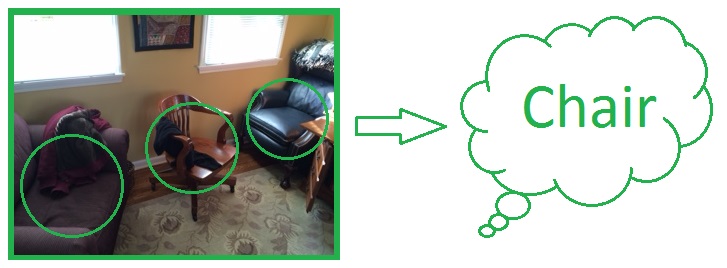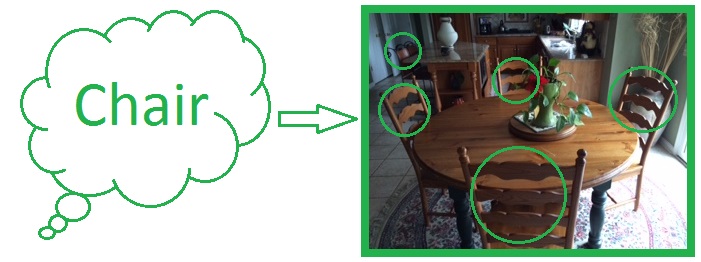[0] Abstraction
Abstraction is the conceptual process of forming, filtering, or distilling the information content of a concept or an observable phenomenon, selecting only the aspects which are relevant for a particular purpose[1]. A contrasting notion is that of specification, where a general idea is described by giving a concrete or definite representation of it. Imagine that as I type this, you and I are having a phone conversation and you frantically ask me “WHAT OBJECTS ARE IN FRONT OF YOU??!!???”. I look up and experience the following:

How do I transmit the information content of the physical phenomena I see? Furthurmore, how do I answer the question you just asked me in a coherent way. I mean … we’re buds, and you have a problem that your trying to solve - you desperatly need to know what objects i’m sitting in front of - I can’t just respond to your question by saying something like “I’m hungry”. You’d get pissed. So, like a decent human being, I reply to your question with relevent information. “I see a bunch of chairs.” I say.

I can’t tell you exactly how it happended, but I have in my brain this abstract idea of a chair. I’m sure you have one too. The fact that I use the 5 letter word (C-H-A-I-R) as a name for this idea really is of no consequence, I could easily rename “chair” to “sit-in-thing” and be no worse off. What it means to be a chair varies from person to person and culture to culture. Over the years, repeatedly sitting in countless ‘L’ shaped bundles of wooden planks nailed together, seeing them associated with the english noun “chair”, the constant cycle of word association with a common, everyday object - this is what probably determines my personal idea “chair-ness”. You grew up in a pretty similar fashion. However, Our mutual friend Igor grew up very differntly. Although he’s a native english speaker, he grew up in the boonies on the edge of civilization. When Igor’s legs got tired, he’d find the nearest boulder and have a sit. He’d ask his parents, “what is this dried up slab of magma that I rest on when my legs are tired?”. His parents would say “That’s a chair”. It is pretty clear that what I’ve done is taken the objects of my experience and abstracted them into the idea of a chair. I’ve transmitted this idea to you via the English language by using the noun “chair”.
How do you know what I’m talking about? Again, it’s pretty clear - You’ve experienced chairs before, and you also understand the english language - Hearing the spoken noun “chair” furnishes you (pun intended) with an associated idea. If a small child or an alien asks you what a chair is, you specify what the idea refers to simply by pointing to one.

you often here. “so and so is not a useful abstraction to solve this task”
note about triviality. There are several reason’s why you might be infuruated by what i’ve written above. the number of ways to abstract a particular thing (or collection of things) is essentially unlimited. in general, it is futile to describe what something is. in general, you can only describe how something is being interpreted (or used) in a particular context

From Wikipedia[2]:
Thinking in abstractions is considered by anthropologists, archaeologists, and sociologists to be one of the key traits in modern human behaviour, which is believed to have developed between 50 000 and 100 000 years ago. Its development is likely to have been closely connected with the development of human language, which (whether spoken or written) appears to both involve and facilitate abstract thinking.
References
- https://en.wikipedia.org/wiki/Abstraction
- https://en.wikipedia.org/wiki/Abstraction#Origins